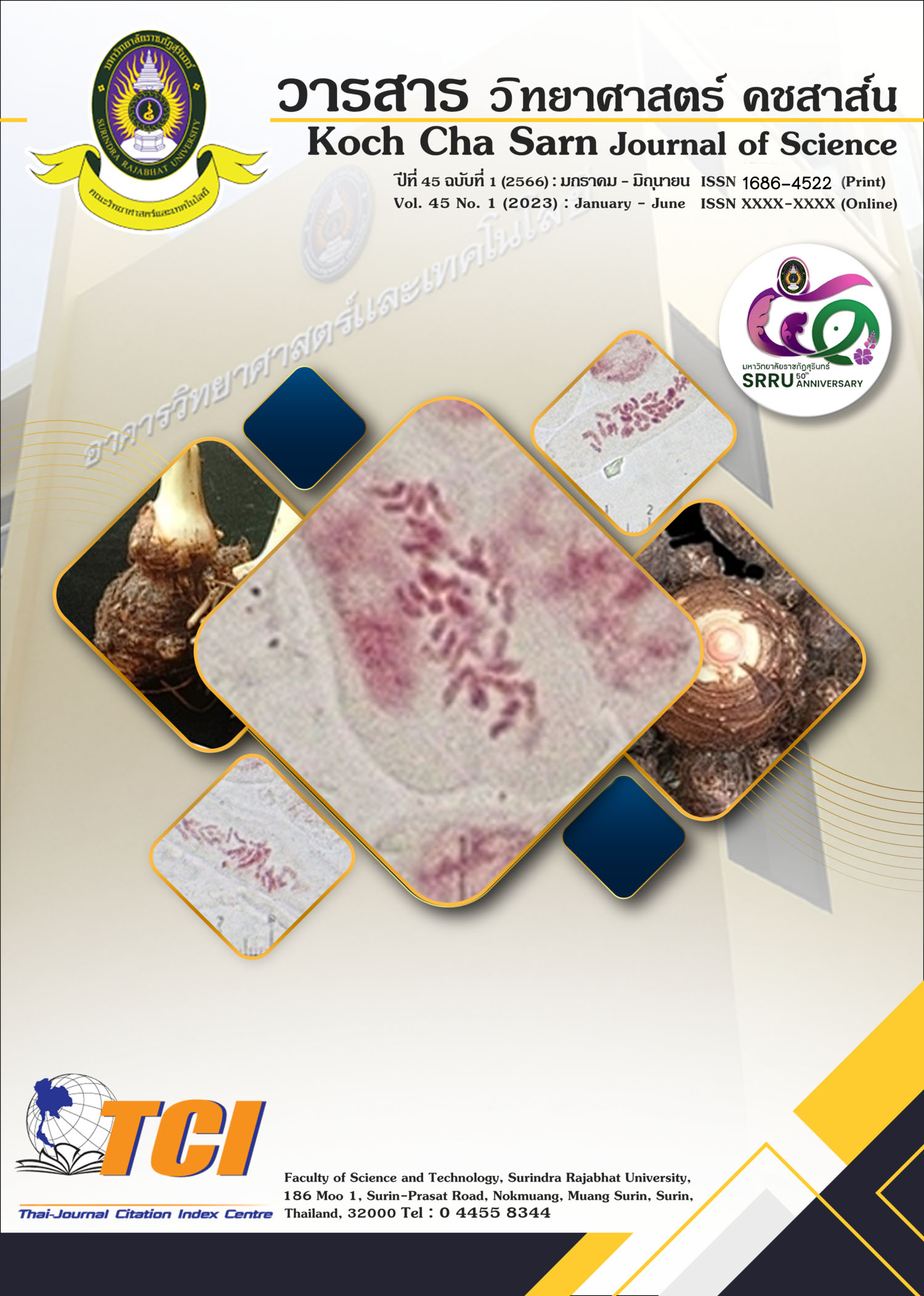Dyeing Silk with Bark of Oroxylum indicum (L.) Kurz.
Keywords:
Dyeing silk, the Bark of Oroxylum indicum (L.) Kurz. Mordant, Color measurement, Colour fastnessAbstract
The objectives of this research were to use the bark of Oroxylum indicum (L.) Kurz. to dye silk and to study the type of mordants, pH value, color values using the CIELAB system, shade, and color fastness to washing, light. Results show that the dye from Oroxylum indicum (L.) Kurz. bark had an average pH of 5.96 was mixed with the various mordants, including tamarind juice, rubber wood fly ash, and lime. Oroxylum indicum (L.) Kurz. bark extract was the highest value of difference in light absorption equal to 0.661 followed by lime, tamarind juice and rubber wood fly ash respectively. After being dyed with extract, the silk yarn had a yellow-gold hue with a brightness (L*) of between 67.523 and 75.440. The red-green ratio (a*) ranged from 17.70 to 9.716. The yellow-blue (b*) ranged in value from 24.68 to 32.446. By way of color comparison in pantone matching system is bright gold. The colour fastness to washing of the dyed silk yarn was very good meanwhile the colour fastness to light was very good.
Downloads
References
Phayakpraphon M. Folk Handweaving Silk in Surin Province. Announcements Institute of Culture and Arts Journal. 2016 July-December;18(1):94–105.
Watters C. and Cantero A. Rat Liver Parenchymal Cell Function during Azo Dye Carcinogenesis. Cancer Research. 1964;25: 67-71.
Puntener, A. and Cambell, P. (2003). European Ban on Certain Azo Dyes. Leather International. 50-51.
Sritram S, Wongsuksaweang V and Pansanthia P. Diversity of Tree Species and Utilization of Natural Dyeing: A Case Study of Community Forest in Surin Province. Agriculture and Technology Journal. 2020 May – August;1(2):17-32.
Chaithada P. Effects of Extraction Solvents and pH on the Amount and Stability of Crude Color Extracted from Plants.Wichcha Journal. 2019 Janualy-June;38(1):65-78.
Chantham N, Thongaiam K, Chaicherdchu S, Wiengnon P, Nakchat O. Dyeing Silk with Bark of Erythrophleum Succirubrum Gagnep. Koch Cha Sarn Journal of Science. 2017 July-December ;39(2):45-58.
มาตรฐานผลิตภัณฑ์อุตสาหกรรม, “วิธีทดสอบสิ่งทอ มอก.121 เล่ม 14 การประเมินการเปลี่ยนสีและการเปื้อนสีโดยใช้เกรย์สเกลและเครื่องมือ,” กรุงเทพฯ: สํานักงานมาตรฐานผลิตภัณฑ์ อุตสาหกรรม, 2552.
มาตรฐานผลิตภัณฑ์อุตสาหกรรม, “วิธีทดสอบสิ่งทอ มอก.121 เล่ม 3 ความคงทนของสีต่อการซักด้วยสบู่ หรือสบู่และโซดา,” กรุงเทพฯ: สํานักงานมาตรฐานผลิตภัณฑ์อุตสาหกรรม, 2552.
Surayot P. The Effect of Extractionsand Mordantson Dyeing Quality and Study the CompoundinMarigold Dye. Science and Technology Nakhon Sawan Rajabhat University Journal. 2017 July – December; 9(1): 31-44.
Rattanajarasroj S. et al. Antioxidative and Neuroprotective Activities of Oroxylum indicum Stem Bark Extracts. Bulletin of the Department of Medical Sciences. 2020; 62 (4): 305-329.
Kliangpradith K, Thongmak N and Sridang P. Adsorption of Organic Substance and Dyestuff from Batik Textiles Wastewater by Rubber Wood Fly Ash. The Journal of Industrial Technology. 2021;17(1):1-14.
Laity P.R., Baldwin E, and Holland C. Changes in Silk Feedstock Rheology during Cocoon Construction: The Role of Calcium and Potassium Ions. Macromolecule Bioscience. 2019 July;19(3), Available from: https://doi.org/10.1002/mabi.201800188.
Silalai N. Tea Flavonoids: their Functions, Utilization and Analysis. Journal of Food Technology, Siam University. 2005 June 2005 - May 2006; 2(1): 2–10.






